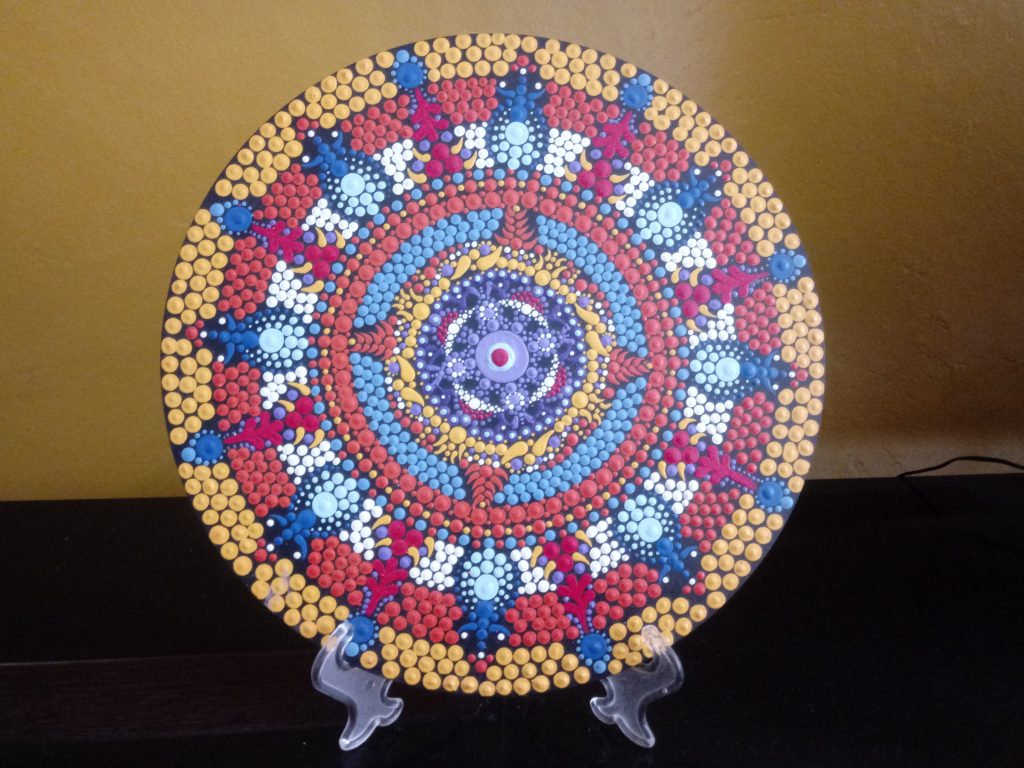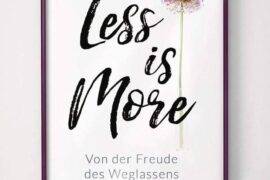My passion for mandalas has started over 10 years when I bought my first mandala to decorate my dining room.

I was strolling on the street in my husband’s hometown when I came across a simple and warm handcraft store. It was love at first sight when I saw this mandala. It’s made with the cardboard tube of toilet roll (It’s amazing, isn’t it?)
The second one (Love first sight again), I bought in November 2019. I was on vacation strolling for Dragão do Mar Center of Art And Culture (it’s a cultural place in Fortaleza, where there are many art exhibitions). There was taking place in a handicraft exhibition. Among many beautiful different kinds of art, I found the mandalas art stall. So, immediately, it drew my eye. At that time, I was about to turn 36 so I asked my husband to give me a vibrant yellow mandala as a birthday gift. This is my favorite color. I love colors so much. I feel that it brings energy to life. 🙂

After that, I bought other three mandalas to give to friends on special occasions. Two of them for birthdays and the other one for good wishes as my friend was leaving town.
The handcrafter does a spiritual job before creating the mandalas. She makes us answer a questionnaire with questions like “Is there any feature that you want to improve or spark?”; “Which field of life (health, peace, creativity, love, harmony, spirituality, happiness, and so forth) you need spiritual guidance? So according to the answers, she draws the mandala.
For example, one of my friends was moving for a job, so this mandala was made to spread good wishes for a new life with appropriate colors. She studied and created a unique mandala for my friend. 💖
But after all, what mandala is? It’s a spiritual symbol in some Asian countries usually in a circle format that holds a great deal of symbolism in Hindu and Buddhist cultures. Believers think that mandalas represent the universe and are used as an instrument of meditation and prayer. They are drawn around one single point in its center, which is also the beginning of the contemplation.
The circular pattern throughout mandalas represents the cyclical nature of life. All lines, dots, shapes are synced in forms and colors.
There are many types of mandalas with many porpuses either artistic or spiritual. The most common types of mandalas are teaching, healing, and sand mandalas.
Teaching mandalas are artistic, in which students make their mandalas according to what they learned every line, shape, and color represents one principle that they have learned.
Healing mandalas are spiritual (my favorites ones.) Their porpuses among others are to bring feelings of calm, leading to focus and concentration.
Sand mandalas are used as a traditional religious event in Buddhism. It represents the impermanence of human nature. I wonder what a shame to spend hours and hours drawing a beautiful piece of art and in the end, just undo everything and started again.
If you want to know a little more about mandalas I recommend this succinct and enlightening post here.
I’d love to hear from you. Do you have any mandalas? What’s your story with mandalas.
Thank you for reading.
See you next time.




4 Comments
Dear Shirley,
What a brilliant article Shirley. It’s the first time I’ve heard about mandalas. I’ve learnt that you are a fan of them. They are beautiful and meaningful!
Keep going and look forward to reading another topic from you.
Sincerely
Dan TM
Dan, Good to know that I brought something new to your knowledge. Thanks for your support. =)
Hi Shirley, I learnt a lot thanks to your writing about Mandala💕
I bought a book to coloring this draws because I needed to be more relaxed in a moment of my Life but now I stopped to do it cuz I practice meditation ,,🙏🙏🙏
Thank a bunch for your interesting topic, I appreciated a lot 😜😘🌈
Hey Daisy, I’m glad to know that you liked the post. I’ve heard that coloring books are relaxing. =) Thanks for your commend.